Herniated disc and Bulging disc
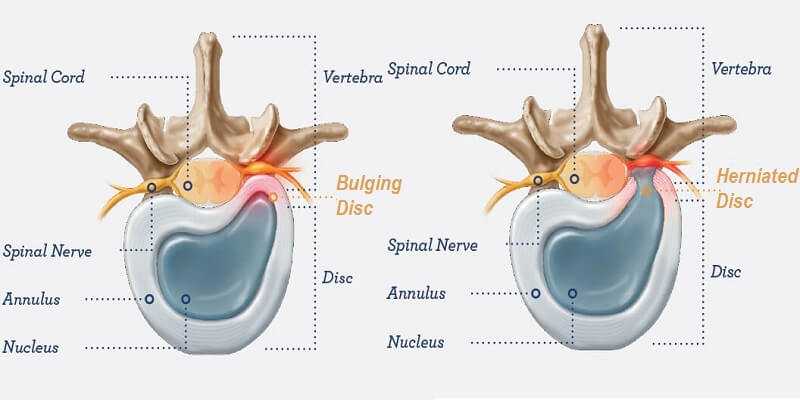
Many conditions that plague humanity can be observed by way of physical examination. The most formidable conditions are those that have severe symptoms with a minimum of externally observable findings. A herniated disc has no observable physical findings.
The question, “what is a herniated disc” is a question that really relates to a condition that has no observable abnormality to the untrained eye. If you have ever had a herniated disc (or knew someone who did) it is remarkable how much pain can be generated from an invisible abnormality. In fact, in medicine, the most difficult disorders seem to be those that are not obvious or self-evident.
The purpose of this article will be to take that which is invisible to you and make it visible. We are going to go to medical school anatomy class for a few moments. So…grab a cup of coffee and follow along. This will be a rather intricate posting.
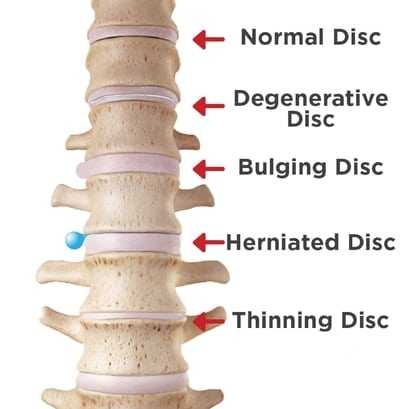
A Brief Anatomy Of The Vertebral Disc
Nearly every vertebra has a disc. It serves to cushion the movement of each unit and bear the weight of the body. It is made of a very resilient form of cartilage called fibrocartilage. It’s the “grizzle” that some of you have eaten in cheap cuts of meat. It is the special taste that is imparted to a Jamaican delicacy called “ox tail” (I am a grafted in Jamaican…my wife was born there).

The fibrocartilage is arranged in concentric rings (lamellae) and is called the annulus fibrosus. It is the outer ring of the disc that surrounds a jelly-like material called the nucleus pulposus located in the center of the disc. Together they combine to create a structure that has incredible resilience to twisting (called torsion), bending, compression, and stretching.
Every tissue of your body is regulated neurologically, is nourished by the vascular-lymphatic-interstial fluid circulation, is repaired-protected-injured by the immune system, and is subject to the other hormonal control mechanisms of the body. The disc is no different.
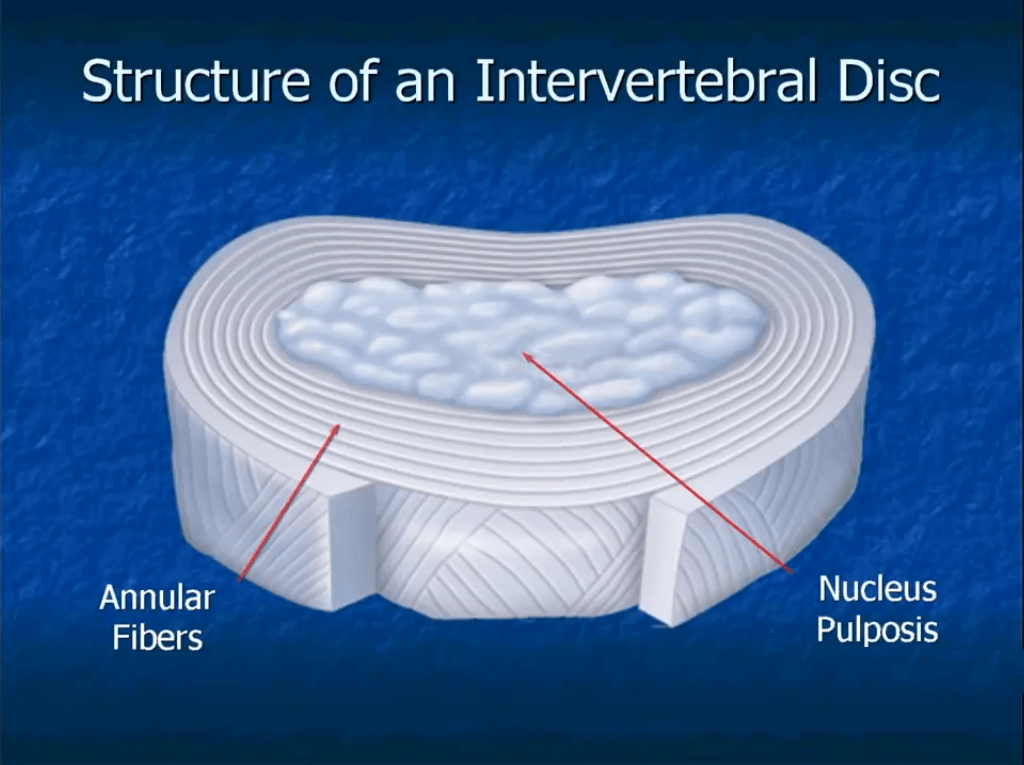
The disc has small blood vessels and nerves in and around it. It’s “health” is dependent on an ample supply of blood, oxygen, and supportive nutrients. Repetitive injury or disease effects the supply and weakens the structural integrity of the disc. The disc in a sense then “starves”.

What About Injury To The Disc?
Degeneration of any structure in the human body occurs when the injury caused bydestructive forces is not effectively counter-balanced by healing processes. The conflict between degeneration and regeneration is ongoing.
A severe force applied to a healthy disc or a mild force applied to a “starved” disc (degenerated) will cause injury. The symptoms of injury must reach a certain threshold before a person can feel it.
If injury occurs slowly and remains subthreshold, an injurious process can go on undetected. This is what often happens when a person who had a relatively small trauma (ie. bending over to pick up a light object) end up with a herniated disc.
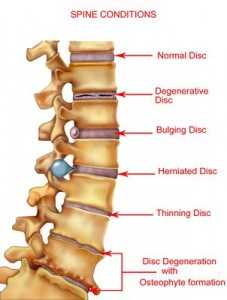
The disc can manifest injury in a continuum of ways. From a bulge in the annulus to a crack in the annular fibers to frank herniation the process is on a continuum. Essentially the annulus fibrosis loses its tensile strength and allows the nucleus pulposis “jelly-like” material to displace.
What Is A “Bulging Of The Disc”?
As a disc ages it becomes less flexible on the outer rim, the interior “drys out’, and the displacement of the middle to the rim occurs. When the disc annular fibers are still intact but stretched asymmetrically a “bulge” can develop (see the above diagram).
In a bulging disc the center nucleus pulposis is still contained by the annulus fibrosis. The disc structure has become deformed but still retains some structural integrity.
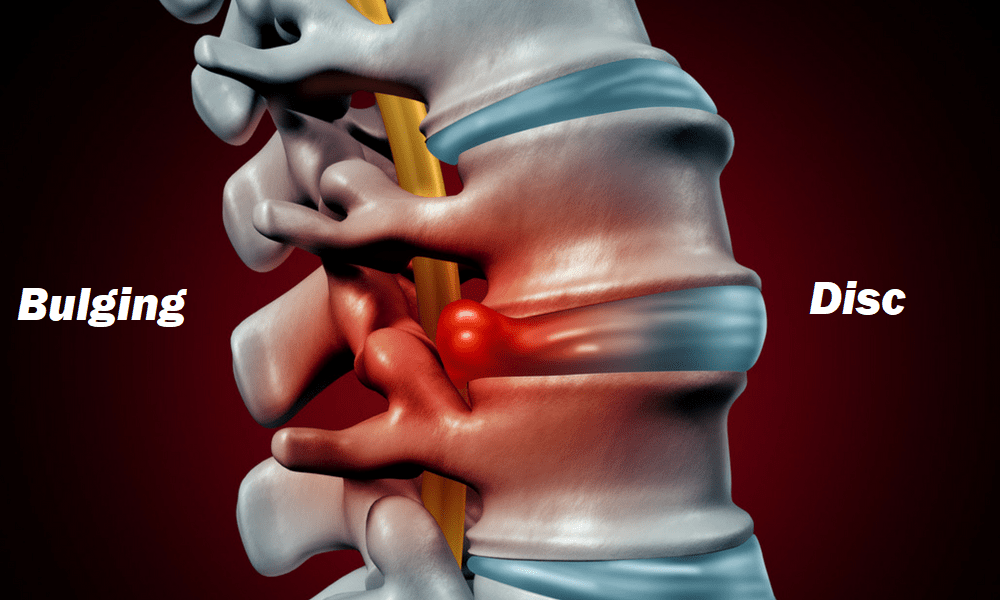
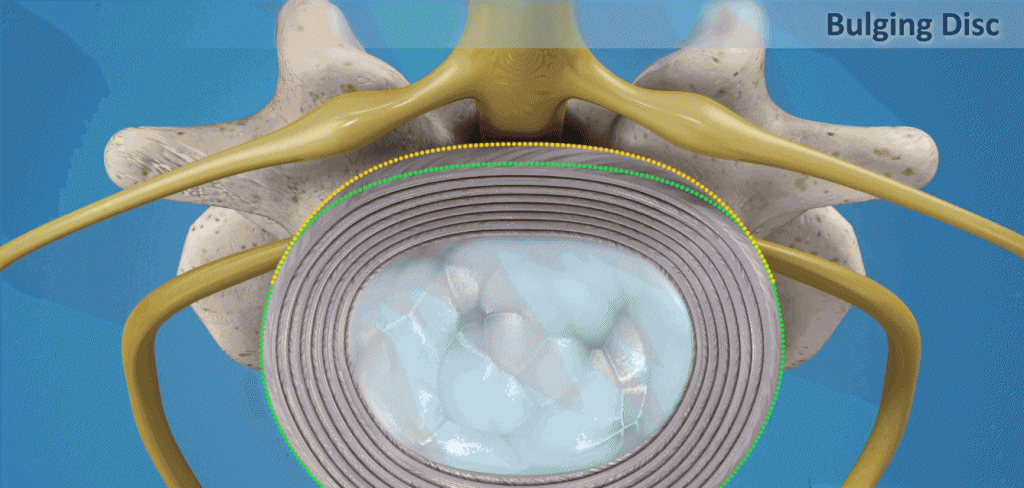
What Is A “Herniation Of The Disc”?
If the outer rim of annular fibrosis fibers separate then the nucleous pulposis may flow out of the center and compress structures outside the disc (ie. such as spinal nerve compression). This is called disc herniation (see the above diagram). This process gives the classic burning pain radiating down a leg when a spinal nerve is irritated in the lower back area (called the lumbar area).
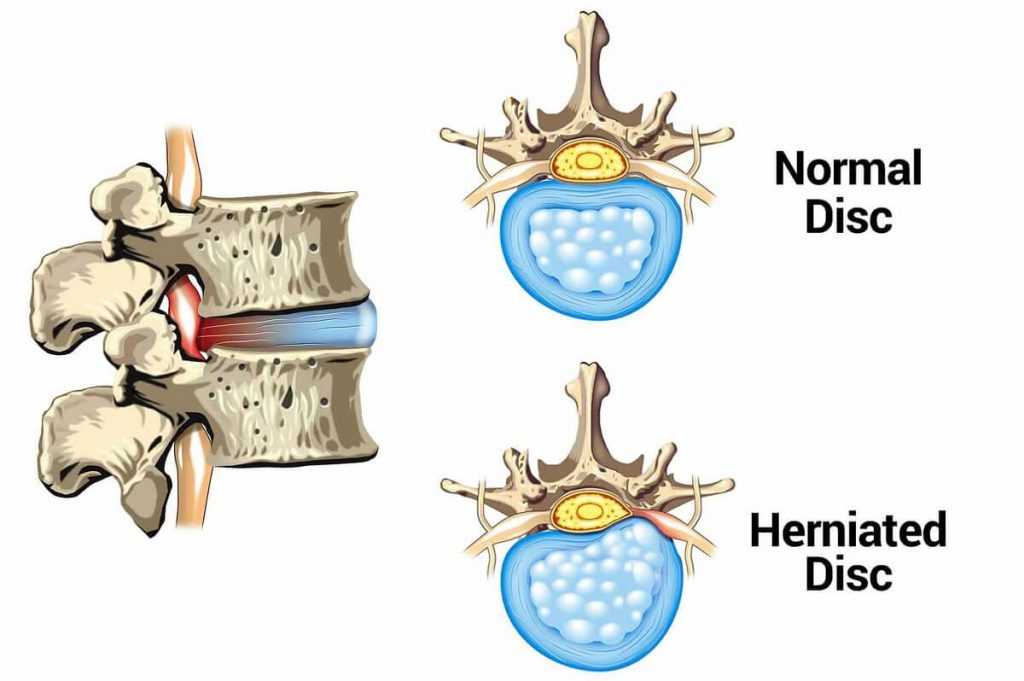
If the separation of the annular fibers swings closed the “jelly” will remain trapped outside the disc and require invasive therapies. If the separation remains open then intensive non-invasive therapies may be successful to facilitate healing.
There is no single diagnostic study that is able to make the diagnosis of disc herniation all the time. Even an MRI can miss disc herniation.
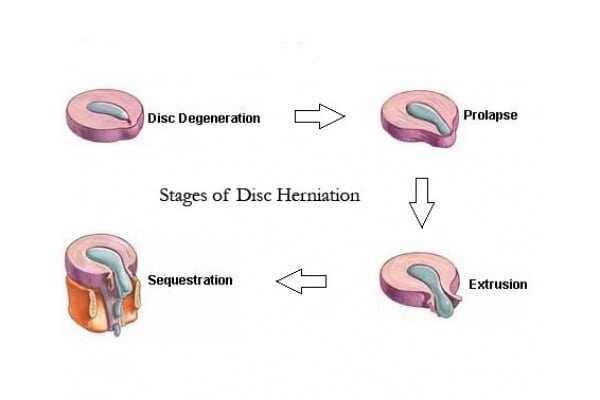

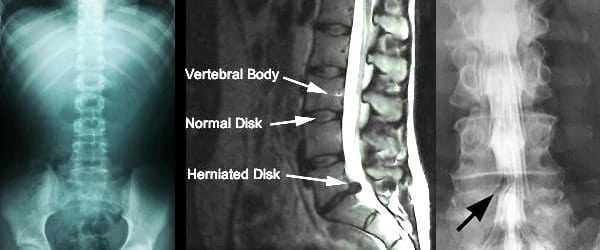
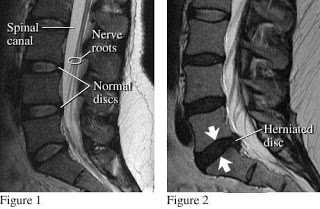
What Is “Disc Fragmentation?”
When the extrusion of the center of the disc is forceful or the disc has degenerated extensively, fragments of the extruded material can break off and be forced outside the disc perimeter. The fragments can migrate and cause obstruction of spinal fluid or compression of remote structures away from the immediate vicinity of the original herniation.
Fragmentation requires surgical removal and cannot be treated conservatively. In most cases an open surgical procedure will be necessary to remove the fragments.

Therapies For The Disc
A) Non-invasive Therapies:
- Exercises (click for link)
- Physical Therapy (click for link)
- Chiropractic/Osteopathic Spinal Manipulative Therapy (click for link)
- Acupuncture (click for link)
- Ultrasound
- Magnetic(click for link)
- Bracing
- Cold Laser Therapy
- High Density Electrical Field Therapy
- Traction
- Cold Packs/Hot Packs/Substances that heat, cool, or irritate the skin
- Transcutaneous Medicines
- Transcutaneous Electrical Neural Stimulation (click for link)
- Massage Therapy
- Hypnosis
- Cognitive Psychotherapy (click for link)
- Pharmacologic (click for link)
- Nutraceuticals (click for link)
None of the listed procedures can remove disc fragments. The mechanisms of healing for the non-invasive therapies is reduction of pain (usually through a neurotransmitter effect), increase disc nutrient supply, decrease disc degeneration, reduce inflammation, and realignment of the spine.
B) Invasive Therapies:
- Epidural Injections(click for link)
- Facet Injections
- Trigger Point Injections
- Microdiscectomy(click for link)
- Fiberscopic Discectomy(click for link)
- Open Discectomy(click for link)
- Open Laminectomy(click for link)
- Open Laminectomy with fusion and internal fixation
- Open Discectomy with prosthetic disc replacement(click for link)
See my article “Lumbar Spinal Surgery…When To Have It?” (Click here for link) All the procedures attempt to reduce the compression on local structures, correct degenerative anatomy, and stabilize the spine.
See my article “Spinal Injections For Back Pain” (Click here for link).
Finally
I have discussed in some detail the anatomy of the disc, mechanisms of disc herniation, non-invasive therapies, and invasive therapies. The treatment of discogenic disease is very effective for reducing pain. For detailed discussions on therapies please see the associated articles that I have written (see the links). I hope this article has been interesting to you.
If I may be of service to you, please send your comments. I would love to be of service to you.
Wishing you joy and good health.

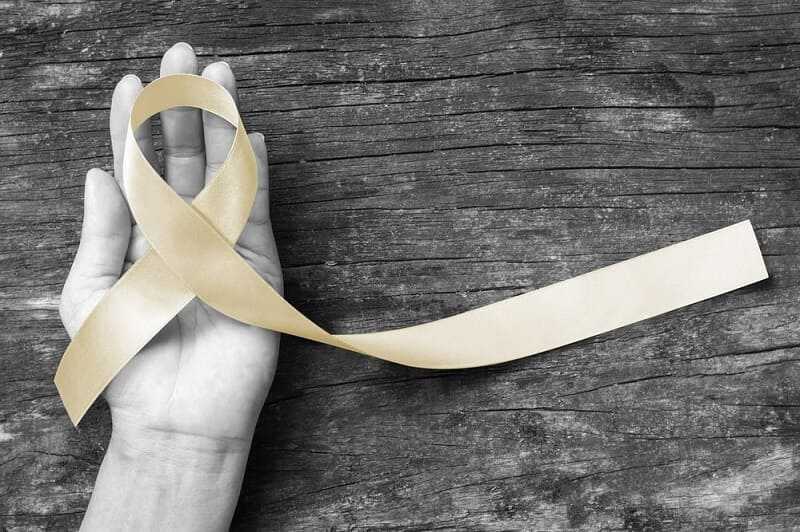
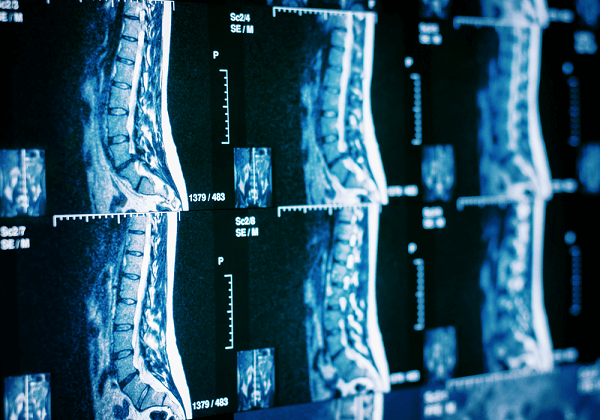
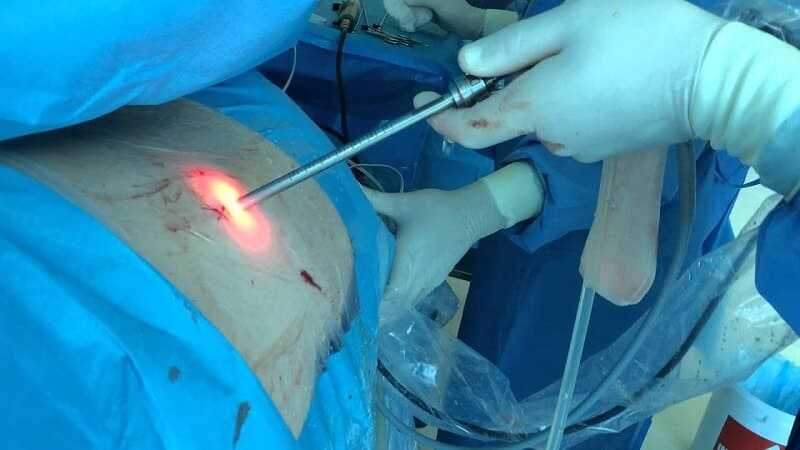

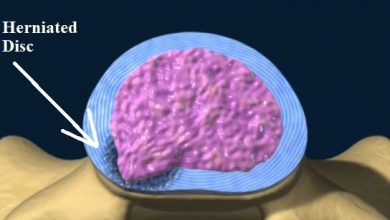
I am suffering back pain since five years. I am fifty years old female. Last two months I got civier pain my both legs and numbness also.I went to a doctor he prescribed me some medication suggested MRI.The report mentioned I have herniated disks.so my doctor suggested that physiotherapy. I almost completed and I feel little better. So kindly help me. I need some excersice. Expecting your valuable reply.
Hello, Ummu. Thanks for your comment. This link to exercise. You can also visit here to better understand the herniated disc.
If you would like further assistance, please send this MRI to this “[email protected]” mail address. We can only offer you ideas.
Never give up your doctor’s advice.
Thanks again for your comments.
Hello
Im 27 yrs old, I injured my back on may 2018 at sport.
About 70 days ago, I took an MRI that indicates bulging discs L4-l5 and l5-s1 which compress thecal sac, traversing nerve root and recesses lateral bilateral. Also effusion facet joints at the same level l4-l5 & l5-s1 (increased fluid intensity).
Please help me show me how to treat these. It is so painful, even i cant sit for a second I eat meal in standing position. The pain is unbearable. I cant walk more than 30- 50 meters